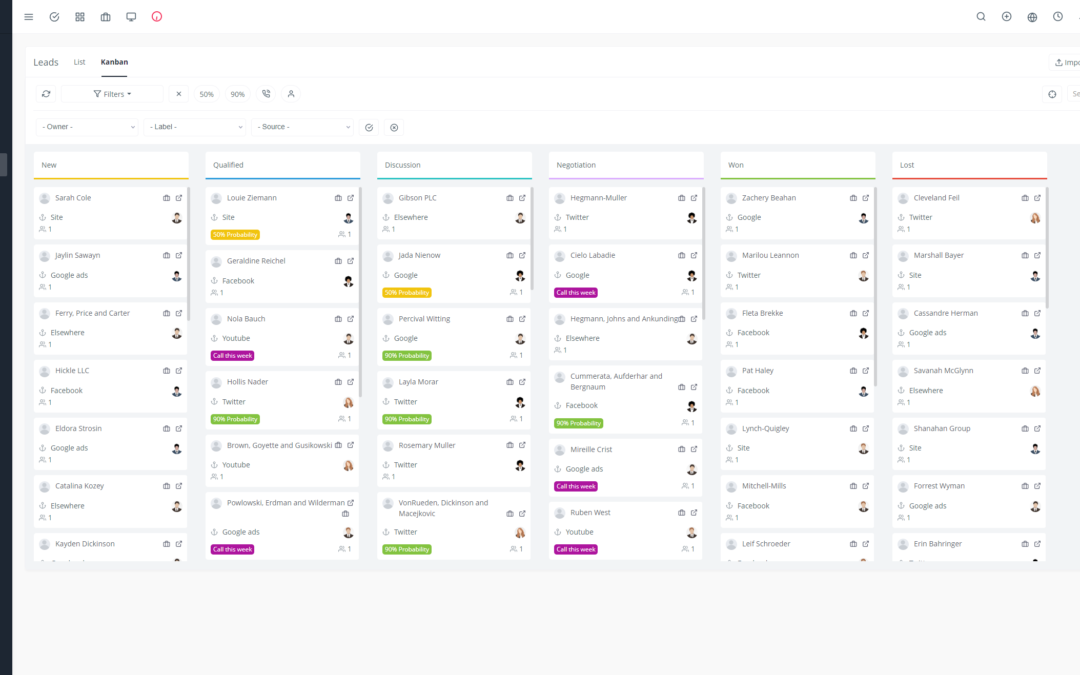In the competitive landscape of SaaS, customer satisfaction is your most valuable asset. 📈 To stay competitive and retain your users, it’s crucial to listen closely to their needs and expectations. How? By collecting and analyzing their feedback! 👂
1. The Importance of Customer Feedback for SaaS Businesses:
User feedback is much more than just a satisfaction barometer. It’s a treasure trove of valuable information for:
Improving your product: Identify weaknesses and opportunities for improvement to meet the real needs of your customers. 💡
Prioritizing your development efforts: Focus your resources on the most requested and appreciated features. 🚀
Retaining your customer base: By demonstrating your willingness to listen and act on their feedback, you build trust and loyalty. 🤝
Detecting trends: Understand the evolution of needs and expectations in your market and adapt your offering accordingly. 📈
Generating new product ideas: Relevant customer feedback can fuel your innovation and create new products and features. 🎉
2. Diverse Collection Methods for a Comprehensive Overview:
To capture the richness of feedback, explore different approaches:
Surveys: Structured questionnaires to gather quantitative and qualitative data on satisfaction, needs, expectations, and preferences. 📊
Interviews: Individual conversations to delve deeper into customer experiences and identify unique nuances and perspectives. 🎤
Forums and communities: Discussion spaces where users can express themselves freely and share their experiences, critiques, and suggestions. 💬
Social Media: Analyze mentions of your brand, comments, and user reactions to identify positive points and areas for improvement. 🌐
3. Analyzing Feedback to Uncover Valuable Insights:
Raw feedback isn’t usable in its current state. You need to transform it into actionable information.
Classification and categorization: Group feedback by theme and identify recurring topics.
Sentiment analysis: Determine the overall tone of feedback: positive, negative, neutral.
Pattern recognition: Identify trends and correlations between different feedback.
Prioritization: Rank feedback based on its impact and frequency to focus on the most important issues.
4. Integration and Automation: An Effective Feedback Loop ♻️
To avoid wasting time and ensure optimal follow-up, it’s crucial to:
Create an integrated system: Integrate feedback forms into your SaaS platform for easy collection.
Automate data capture: Configure tools to automatically collect user feedback.
Use analytics tools: Explore data analysis solutions to transform your feedback into actionable insights.
5. Concrete Actions for Optimal Customer Satisfaction:
Respond to customer feedback: Don’t leave feedback unanswered. Be transparent and engage in conversation with your users.
Implement a follow-up process: Track reported issues and inform users of the actions taken.
Communicate changes: Inform your users of changes made to your product based on their feedback.
6. Customer Satisfaction, a Driver of Loyalty:
A satisfied customer is a loyal customer. 🌟 Customer feedback can help you:
Improve the perceived value of your product: By meeting the needs and expectations of your users, you strengthen their perception of your product’s value.
Identify the most appreciated features: Focus your efforts on the features most used and appreciated by your customers.
Build an engaged community: Encourage user engagement by creating discussion spaces and incorporating their feedback.
7. Evaluating Your Product’s Performance:
Customer feedback is a valuable tool for measuring your product’s performance:
Objective assessment: Gain insights into user experience and customer satisfaction.
Problem detection: Identify malfunctions or features that don’t meet user needs.
Measuring the impact of changes: Evaluate the impact of modifications made to your product based on customer feedback.
8. Real-World Success Stories:
Slack: The popular communication tool has implemented a continuous feedback program to improve its product and meet the needs of its users.
Dropbox: The company has created a community forum where users can share their comments and participate in the product roadmap.
Intercom: The company has established a dedicated team for collecting and analyzing customer feedback to improve its product and communication.
9. Pitfalls to Avoid When Collecting and Analyzing Feedback:
Not collecting feedback: Don’t underestimate the importance of collecting feedback.
Too long questionnaires: Keep your questionnaires short and concise to maximize participation.
Lack of clarity: Ask clear and precise questions to get relevant answers.
Lack of analysis: Don’t let feedback pile up without analyzing and exploiting it.
10. New Ideas and a Lasting Customer Relationship:
Generating new product ideas: Customer feedback can fuel your creativity and help you develop new features.
The role of customer service: Customer service plays a key role in collecting and managing feedback.
Transparency and active listening: Be transparent and honest with your customers, and show your willingness to listen to their feedback.
A continuous feedback loop: Create a continuous feedback loop for constant product improvement.
11. Tools and Resources:
SurveyMonkey: A popular tool for creating surveys and collecting feedback.
UserVoice: A platform for managing user suggestions and prioritizing features.
Hotjar: A tool for analyzing user behavior on your website and identifying areas for improvement.
Google Analytics: A tool for tracking statistics for your website and applications.
Conclusion:
Collecting and analyzing customer feedback are essential elements for the success of a SaaS business. By paying attention to the voice of your users, you can improve your offering, retain your customers, and create a product that meets the real needs of the market. 🎯 Remember, the key to success lies in active listening, transparency, and a constant desire for improvement. 🚀

